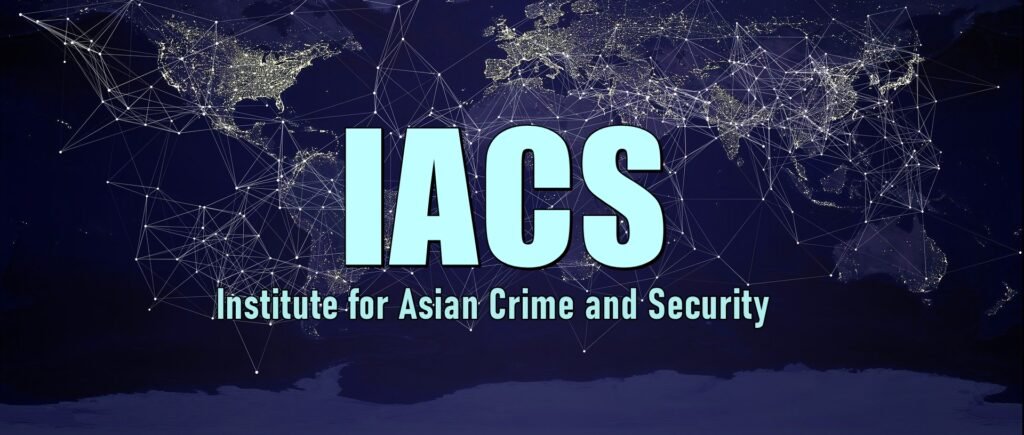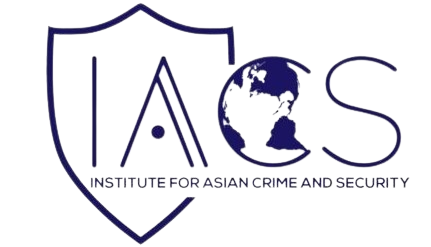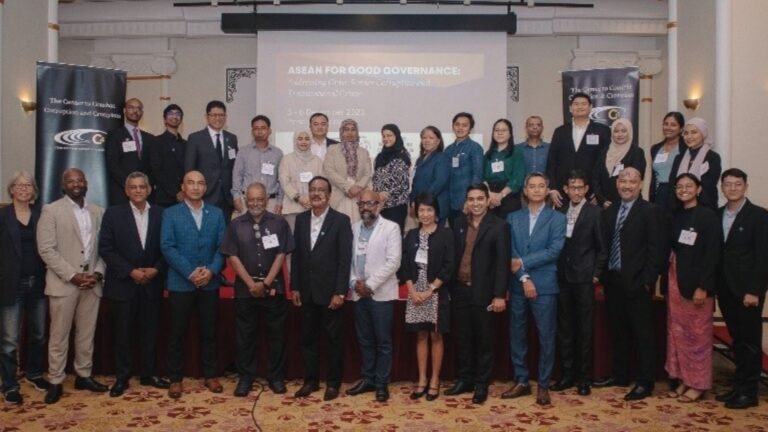Vietnam’s last wild rhinoceros was shot and killed by poachers in 2010. This incident was one of the more unforgettable and shameless events as Vietnam has continued to struggle to enforce their environmental conservation mandates. When Vietnam lost its last java rhino, many experts worried that this country would face the extinction of several species on the land and the water in the near future. Unfortunately the native tiger will possibly be the next threatened species to be declared extinct in Vietnam. Accordingly, it is currently estimated that only five Indochinese tigers (Panthera tigris corbetti) remain free in the wild. At the same time, there are less than 100 elephants left in nature and 21 out of 24 regional primates are presently endangered. Within Vietnam, hundreds of bears are being kept in captivity so that their bile can be unlawfully collected, and the illegal wildlife trade also threatens many other rare animal species. This brief essay will point out at least nine primary reasons to highlight why Vietnam is likely to continue as a hot-spot region for the illegal wildlife trade (IWT).
# 1. Vietnam’s ecosystem as a lucrative pursuit for traffickers
Vietnam is one of the countries with a diversity of ecosystems, species and genetic resources. These include around 15,986 species of flora, more than 100 endemic species of birds, and almost 80 types of mammals, of which many rare and wild species are included in Vietnam’s Red Data Book and the International Union for Conservation of Nature (IUCN) Red List for protection (WWF Greater Mekong, 2020). However, this clearly valuable resource is currently being threatened for many reasons, which may lead to the rapid decline of wildlife populations, pushing many endangered species within Vietnam to the brink of extinction. Surveillance by camera traps and surveys in national parks and protected areas in the last five years have shown that wildlife populations have significantly declined. Many wildlife species such as tigers, clouded leopards, civets, and pangolin have recently not been recorded within field surveys and may have been lost forever. On the other hand, according to the International Union for Conservation of Nature report, before the 1980s of the 20th century, the number of marine turtles in Vietnam was huge, particularly since they have tens of thousands of babies each year. However, now the number of turtles has decreased significantly, in which out of the five species of sea turtles, hawksbill turtles are in severe decline. Other species, such as pineapple turtles and leatherback turtles, have had their populations become even smaller, with an estimated less than ten individuals spawning annually throughout Vietnam’s waters.
#2. High rate the wildlife trafficking and smuggling
Since the shocking loss of the final java rhino in 2010, Vietnam currently has no living species of rhino, but is still considered one of the largest markets for rhino horn in the world. It is obvious that the demand for rhino horns has led to the extinction of rhinos in Vietnam, but this demand still supports the rhino massacre across the African continent at an alarming rate. Since the 2010s, Vietnamese criminals have accounted for 56% of Asian arrests related to rhino wildlife crimes in South Africa. While human beings across the globe have faced and confronted the severe waves of the spread of COVID-19, wildlife traffickers have never stopped their operations. This situation is still relevant in Vietnam, with the last evidence of arrest and seizure of more than three tons of animal bones and 138 kg of rhino in July 2021. However, the Vietnamese government has urged a new strict regulation to ban illicit wildlife markets since early 2020, when the coronavirus started.
Figure 1: Several tons of pangolin scales seized in Vietnam

#3. Complicated scenarios involving wildlife poaching
In Vietnam, the amount of illegal trapping of wild animals still exists in most national parks and sanctuaries, although some efforts by law enforcement agencies have made undeniable contributions. The situation of hunting and killing animals across Vietnam is not a new phenomenon. It is becoming more and more painful as these illegal and immoral acts show signs of increasing again in serval mountainous areas in Vietnam, which are the habitats of numerous wildlife species. The brutality of illegal wildlife poachers is having a clear and painful impact on endangered animals.
From border forests to national reserves, wildlife poaching has reached an alarming rate, where endangered animals are constantly being hunted. The brake lines of bicycles and motorbikes or twisted cable cost only a few thousand Vietnamese Dong (only about a few USD cents), but when in the hands of wildlife hunters, they have become a powerful tool used to design dangerous traps to capture animals on the jungle floor (Belecky & Gray, 2020). There are not any recent official statistics involving the use of wildlife snare traps and their related consequences for the targeted animals. It is estimated that thousands of fatal snare traps have entrapped wildlife in several mountainous areas across the borderland between Vietnam and neighbouring countries. On the other hand, slow-moving wildlife species in the sea, particularly the turtle, have been overexploited, and this is one of the leading causes of the move to exploit non-timber forest products. These specific forms of illegal hunting, either in the forest or under the sea, are considered the primary threats to Vietnam’s quickly diminishing biodiversity.
#4. Geographical factors as a transnational hub
According to statistics from 2016 to 2020, many arrests involving illegal wildlife specimens of foreign origin were carried out by Vietnam’s law enforcement agencies, including Customs, Border Patrol, the Police, and Rangers. In 2019, at least three severe cases were uncovered that involved international crime syndicates that had smuggled 9.1 tons of ivory into the Vietnamese port at Tien Sa, 8.3 tons of pangolin scales into Hai Phong, and 93 kg of rhino horn into Tan Son Nhat Airport. The spread of COVID-19 across Vietnam and the strictest banning by the Vietnamese government of wildlife trading between 2020 and 2021 did not result in a notable reduction in the IWT within Vietnam, as the nation still maintains significant international smuggling sites for endangered wildlife.
There are at least three main reasons involving geographical factors that have led to Vietnam being affected by IWT and smuggling as an international hub. Firstly, Vietnam is located in a favourable geographical area for global trade goods (World Bank, 2020b). This is because Vietnam has a variety of transportation options, including roads, railways, airports, and seaports. Secondly, many porous borderlands between Vietnam and its neighbouring countries in mainland Southeast Asia, including Cambodia and Laos, have become practical pathways for traffickers to take advantage and transfer wildlife products to other areas via Vietnam’s transnational connections (Mahanty, 2019; World Bank, 2020a). Thirdly, neighbouring China with several connections to Vietnam via land, sea, river, and air, have permitted traffickers to also look for Vietnam as one of the specific hubs to transfer illegal wildlife to China, since the Chinese government is strengthening its abilities to combat this illicit trade (Collier, 2021; Wong, 2020). Starting 30 years ago, Vietnam has unfortunately been a reliable supplier of illegal wildlife into China, via connections from Thailand, Malaysia, Indonesia and Laos.
Figure 2: Connecting Vietnamese transnational organized crime organizations to wildlife illegal trafficking

(Source: https://eia-international.org/wp-content/uploads/EIA-report-exposing-the-hydra.pdf)
#5. The involvement of transnational organized crime groups
As one of the top four benefits among transnational organized criminal (TOC) activities (i.e., narcotics, weapons, and human trafficking), wildlife trafficking has quickly become one of the most lucrative and exceptionally profitable for criminal traffickers (UNODC, 2020). Vietnamese and non-Vietnamese traffickers are not exceptions in the scope of IWT operations for more than two decades (Cao & Wyatt, 2013; Li & Wang, 1999). However, until the Hanoi Conference on Illegal Wildlife Trade in November 2016, Vietnam admitted that ‘IWT generates illegal profits for TOC syndicates and undermines good governance and the rule of law.’ Meanwhile, an 18-month investigation in 2015 and 2016 by the Wildlife Justice Commission into the wildlife trafficking hub in Nhi Khe commune, in the surrounding areas of Vietnam’s capital Hanoi, pointed out the intense modus operandi and the structure of TOC groups involved in this illicit trade as these hearings were open to the public. Furthermore, as a transnational hub of contraband and wildlife trafficking in recent years (Luong, 2020), the nexus of the illegal trade in wildlife and narcotics could overlap in Vietnam in the future, s it has in Brazil, Colombia, and Mexico (van Uhm, South, & Wyatt, 2021). It is clear that there is a billion dollar wildlife smuggling industry in Vietnam.
#6. High demand for the consumption of illegal wildlife products
In the years after the war, when Vietnam was still an underdeveloped country, forests became a source of food in many places. However, in the 1990s, i.e. more than 20 years after the war in Vietnam, people saw a movement to export rare animals such as pangolins, turtles, and other animals into China (Li & Wang, 1999). However, now Vietnam has become a consumer country with many meals involving wildlife products. As a result, urban restaurants are primarily responsible for this on a scale that has wiped out entire populations of species. Turtles, pangolins, rats, snakes, monkeys are but a few of the animals regularly captured, slaughtered and consumed by humans in their quest to fulfil their food consumption habits.
On the other hand, recently, the consumption of wildlife has shifted from necessity to flaunting status. In an economy that is relatively booming within Vietnam, combined with an increase in wealth among the population, symbols of wealth and quality of life have become more attractive and competitive. Rice wine is a drink consumed commonly across Vietnam and is made with various flavours – from plum to snake, apricot to the tiger, as one of signs of enhanced social status among peers. Indeed, the understanding and perception of a large part of the people in general and those who have the financial ability to use products derived from those wildlife’s productions are misleading. For example, they mistakenly believe about the healing effects of products from rhino horn, pangolin scales or other endangered wildlife, and are enthusiastic about the reported health-enhancing effects of alcohol-soaked carcasses of wild animals.
Furthermore, parts from particular animal species, such as tiger, elephant, and/or rhino, have been targeted by some to produce handicrafts and decorate furniture in several cities in Vietnam. Meanwhile, the use of rare and wild animal products indirectly motivates criminals to continue hunting and trading. This unfortunately reduces the effectiveness of law enforcement agencies to prevent and combat these challenging problems. It is likely that neither the findings of academic research nor international health advice from outside experts about the potential risks and consequences of illegal wildlife trading and consumption have yet filtered into the thoughts of Vietnamese locals.
#7. Limited implementation of actions by law enforcement agencies
In 2016, Hanoi burned nearly 2.2 tons (elephant ivory) and 70 kg of rhino horns (estimated to be worth more than US$ 7 million on the black market) as one of their strongest encouragements to stop the IWT. However, even after the first public hearings about IWT (WJC) and the burning of the wildlife contraband, the situation in Vietnam has not yet declined, even throughout the COVID-19 pandemic. The limitations of the law enforcement professional operations to tackle IWT cases is a specific reason that has created a more complex scenario. Firstly, specific cooperation between domestic law enforcement agencies on preventing and combating IWT has revealed an ineffective partnership. Vague regulations on functions and authority among those agencies at each level, from headquarters to local areas, have led to different priorities within their respective strategies. Secondly, the type of environmental crime, including crimes against wildlife, is still considered ‘new’ in Vietnam and therefore, its ‘seriousness’ as it relates to public concerns has not been properly assessed. The prevention and combat of this type of crime have not received adequate budgetary and personnel investment, leading to the phenomenon that these law enforcement authorities lack human resources, proper equipment and capacity to take on these tasks effectually. Thirdly, the process of making and transferring documents to handle wildlife and their parts after confiscation between LEAs (i.e. customs, border guards, forest rangers, and police officials involved in the enforcement of environmental crime) and criminal justice agencies (inspection agencies, prosecutors, and the courts) are still restrained by inconsistent approaches. For example, almost all these LEAs lack specialized storage facilities and equipment such as freezers to preserve animal meat, bones and horns, which could decompose and lead to the risk of disease transmission from animals to humans. Finally, traffickers have formed transnational criminal networks to cooperate closely as organizational structure and sophisticated planning have become more practically and effectively operational. However, international law enforcement and criminal justice cooperation between countries in the region is still limited due to the lack of harmonized laws in each affected country and the absence of mutual legal assistance agreements (EIA, 2021; Nguyen & Roberts, 2020). In addition, legal regulations have not created favourable conditions for sharing information and evidentiary specimens between countries, which thus lack practical international coordination mechanisms.
#8. Barrier issues in the legal framework
Although Vietnam has been taking many measures to improve its legal and enforcement programs involving IWT, some unclear regulations within the legal framework may have led to ineffective results and actions. Firstly, the new Criminal Code of Vietnam (2015 CCV), amended in 2017, has adjusted and increased the court imposed sentence for IWT, which can be punished with a maximum penalty of up to 15 years in prison. However, the current law does not include sanctions that address the derivatives of endangered and other animals such as honey, gall, and the eggs of wildlife. It makes the legal consequences caused by those who illegally trade in such specimens challenging for prosecutors and the courts to determine. Remarkably, Article 244 (2015 CCV) stipulates that criminal liability is only applied in cases of violations related to body parts of animals if those parts are “inseparable parts of life.” It is a vague, confusing term that can lead to many different interpretations and cause law enforcement and judicial authorities procedural and prosecutorial difficulties. For example, the vital organs of wildlife such as the head, heart, liver, lungs, etc., can easily be identified as “inseparable parts of life” that, of course, wildlife cannot live without. However, for other parts such as scales, skin, feathers, teeth/tusks, claws, and so on, the question arises if these body fragments can be defined as “an integral part of life?”
Secondly, the coordination mechanisms and investigation procedures after arresting illegal wildlife traders or collecting the by-products are not clearly defined. In addition, there is no precise regulation on how confiscated wildlife products and evidence should be handled after the end of the investigation. Notably, there are specific conflicts of interest in the provisions on the handling of wildlife evidence. For example, Article 106 of the Criminal Procedure Code (2015) stipulates that “wildlife’s evidence must be handed over to specialized management agencies immediately after the conclusion of assessment is obtained” to be safeguarded and preserved during the criminal proceedings. However, this can only be done after “an assessment has been made,” making it difficult for law enforcement agencies to understand and implement the expected protocols (WCS, 2018). Thirdly, it is difficult to identify criminals involved, either directly or indirectly, in IWT cases, which has led to the slow handling of these cases by Vietnamese LEAs. For example, in 2017, Ho Chi Minh City’s Police had to suspend four serious cases that involved over two tons of confiscated elephant ivory due to challenges in properly identifying the suspects.
#9. Enhanced social media and information communication technology (ICT)
In recent years, criminals have carried out IWT through use of the internet, spreading increasingly without geographical barriers. In Vietnam, illegal wildlife trading violations on the internet have been increasing at an alarming rate. On social networking sites, websites, forums, many wildlife species such as squirrels, porcupines, pythons, snakes, iguanas, crocodiles, tigers, loris, and otters can be found, even if illegally hunted or traded. In addition, due to the nature of the internet as a virtual environment, individuals involved often change accounts and use fake identities, thereby allowing re-posted information to be changed and removed very quickly. Consequently, this has led to difficulty revealing the suspect’s true identity and in collecting evidence. Taking advantage of the internet’s ease of use, IWT traders have regularly advertised products that easily reach buyers without having to reveal their true identities via social media platforms such as Facebook, YouTube, Zalo, and Tik Tok. Towards the end of 2020, the Environment Nature for Vietnam (ENV) highlighted that 1,300 out of 1,700 wildlife trafficking reports were the result of online sales.
Conclusion
Although Vietnamese authorities have indicated that addressing IWT is a national priority, through legislation and policy, the actions of law enforcement agencies, prosecutors and the courts have been generally ineffectual at best. Unfortunately the demand for wildlife products, predominantly in neighboring countries such as China, have driven individuals within Vietnam to engage in the hunting, trading and smuggling of endangered species. These disturbing activities will continue until there is a more concrete assessment of investigative and enforcement strategies at both the local and federal levels within Vietnam and a move for effective transnational cooperation between LEAs and neighboring governments.
References:
Belecky, M., & Gray, T. (2020). Silence of the Snares: Southeast Asia’s Snaring Crisis. Retrieved from Singapore:
Cao, N. A., & Wyatt, T. (2013). A Green Criminological Exploration of Illegal Wildlife Trade in Vietnam. Asian Journal of Criminology, 8(2), 129-141.
Collier, P. (2021). Counter Wildlife Trafficking Digest: Southeast Asia and China Retrieved from Bangkok, Thailand: https://www.usaidwildlifeasia.org/resources/reports/inbox/cwt-digest-2020/view
EIA. (2021). Forests: Double Impact – The Nexus Where Wildlife and Forest Crime Overlap. Retrieved from London: https://eia-international.org/wp-content/uploads/Double-Impact-2020-SINGLE-PAGES.pdf
Li, W., & Wang, H. (1999). Wildlife Trade in Yunnan Province, China, at the border with Vietnam. Traffic Bulletin, 18(1), 21-30.
Luong, T. H. (2020). Transnational Crime and its Trends in South-East Asia: A Detailed Narrative in Vietnam. International Journal for Crime, Justice and Social Democracy, 9(2), 88-101. doi:https://doi.org/10.5204/ijcjsd.v9i2.1147
Mahanty, S. (2019). A Tale of Two Networks: Market Formation on the Cambodia-Vietnam Frontier. Trans Inst Br Geogr, 44, 315-330.
Nguyen, T., & Roberts, D. (2020). Exploring the Africa-Asia Trade Nexus for Endangered Wildlife Used in Traditional Asian Medicine: Interviews with Traders in South Africa and Vietnam. Tropical Conservation Science, 13(1), 1-14.
UNODC. (2020). World Wildlife Crime Report: Trafficking in Protected Species. Retrieved from Vienna, Austria:
https://www.unodc.org/documents/data-and-analysis/wildlife/2020/World_Wildlife_Report_2020_9July.pdf
van Uhm, D., South, N., & Wyatt, T. (2021). Connections Between Trades and Trafficking in Wildlife and Drugs. Trends in Organized Crime. doi:10.1007/s12117-021-09416-z
WCS. (2018). A Situation Review of Wildlife Crime and Law Enforcement Response in Vietnam, 2013-2017. Retrieved from Hanoi, Vietnam:
Wong, R. (2020). Shadow Operations in Wildlife Trade under China’s Belt and Road Initiative. China Information.
World Bank. (2020a). Lao Biodiversity: A Priority for Resilient Green Growth. Washington D.C.: The World Bank.
World Bank. (2020b). Overview: Vietnam [Press release]. Retrieved from
https://www.worldbank.org/en/country/vietnam/overview
WWF Greater Mekong. (2020). Mekong Deforestation [Press release]. Retrieved from
About the author: Dr. Hai Thanh Luong is a senior researcher with the IACS. He has spent over fifteen years designing and training law enforcement agencies in Southeast Asia, mainly focusing on Vietnam. He focuses on cross-border crimes in mainland Southeast Asia, including drug trafficking, human trafficking, policing and police training, and Vietnamese criminal groups overseas.








